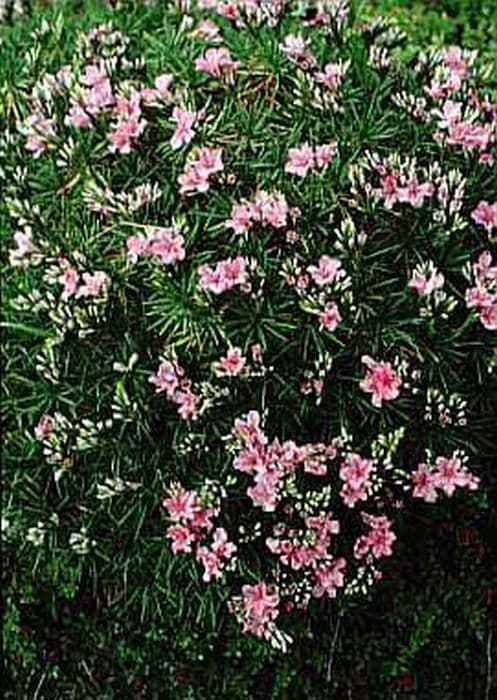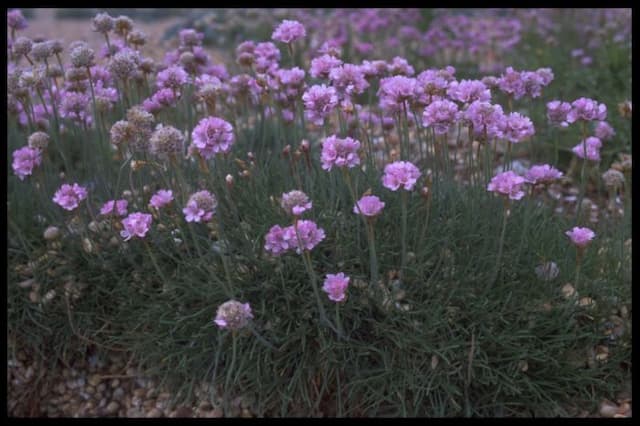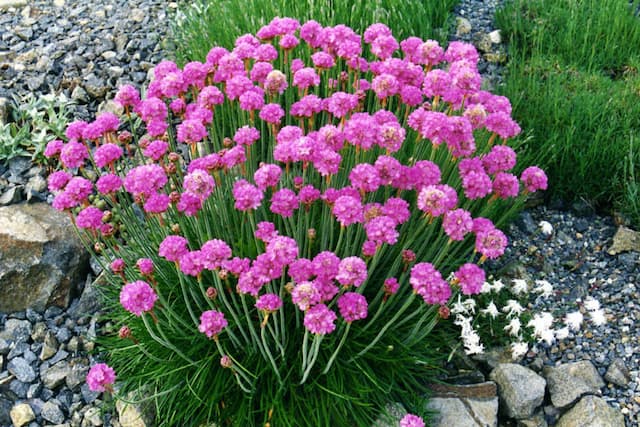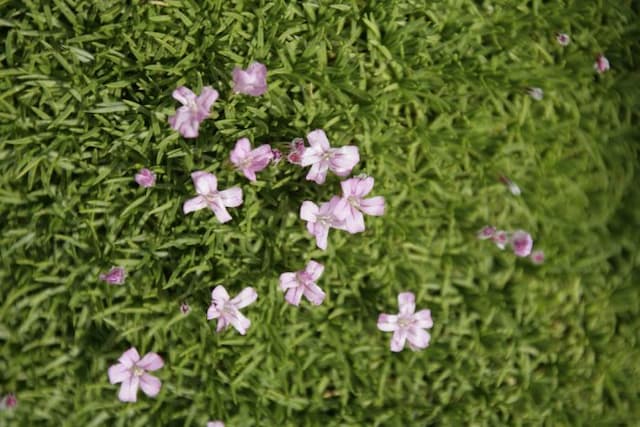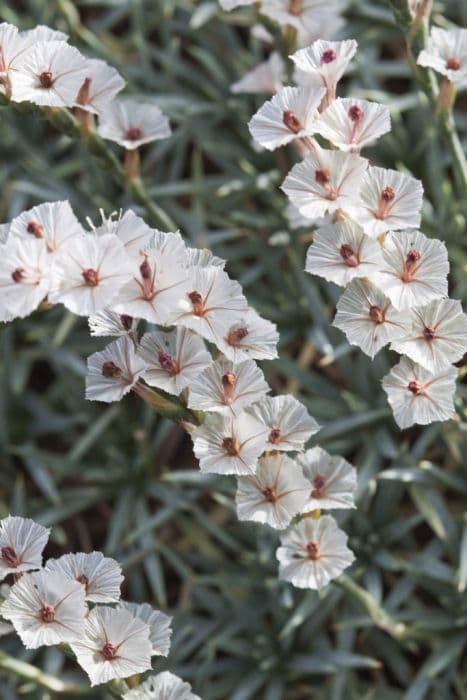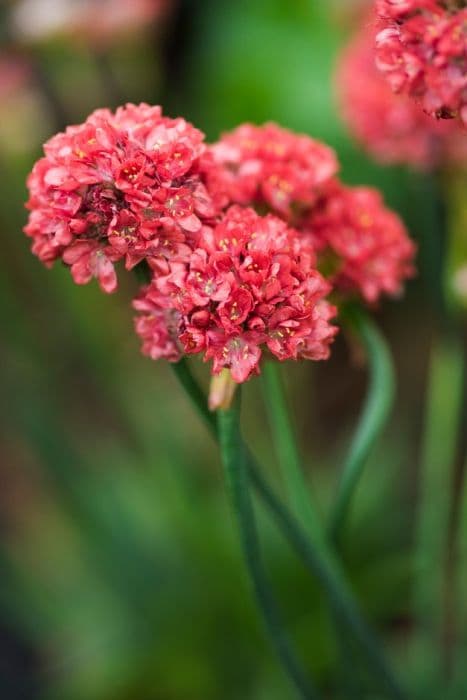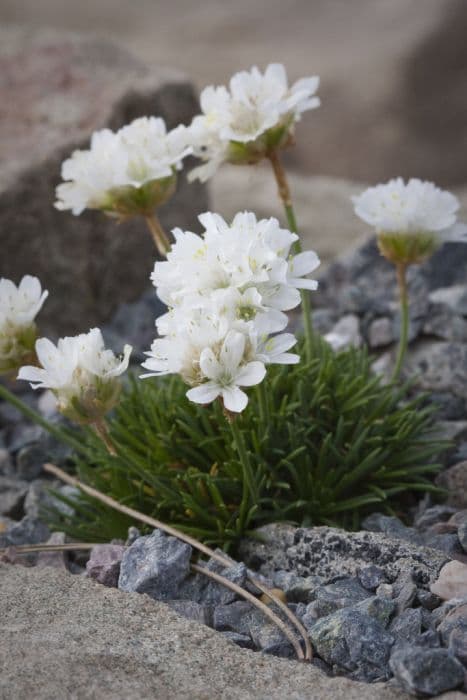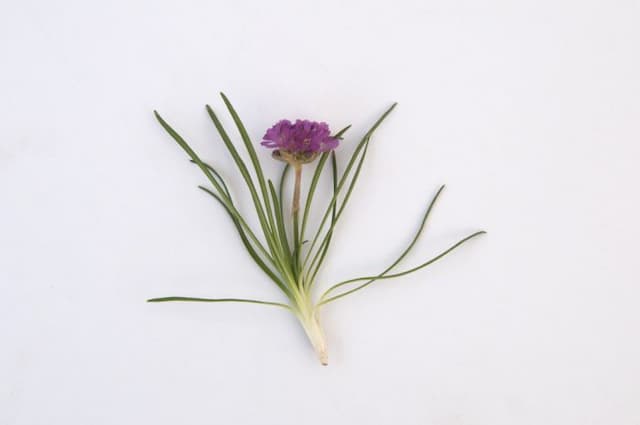Hardy blue-flowered leadwort Ceratostigma plumbaginoides






ABOUT
C. plumbaginoides is a low-growing herbaceous perennial with spreading roots, forming a mat of stems bearing oval leaves which turn red or purple in autumn. Clusters of rich blue flowers from late summer
About this plant
 Names
NamesFamily
Plumbaginaceae
Synonyms
Plumbago, Leadwort, Dwarf Plumbago, Hardy Plumbago
Common names
Plumbago larpentiae.
 Characteristics
CharacteristicsLife cycle
Perennials
Foliage type
Deciduous
Color of leaves
Green
Flower color
Blue
Height
1-2 feet (30-60 cm)
Spread
2 feet (60 cm)
Plant type
Shrub
Hardiness zones
5-9
Native area
China
Benefits
 General Benefits
General Benefits- Low Maintenance: This plant is easy to care for and does not require frequent watering or intensive maintenance, making it ideal for gardeners of all skill levels.
- Drought Tolerance: It can withstand periods of low water, which makes it suitable for xeriscaping or drought-prone gardens.
- Seasonal Interest: With its bright blue flowers that bloom from late summer to autumn, it provides vibrant color when many other flowers are fading.
- Attracts Wildlife: The blossoms attract pollinators such as bees and butterflies, promoting biodiversity in the garden.
- Ground Cover: It serves as an excellent ground cover, spreading to fill space and suppress weeds, reducing the need for frequent weeding.
- Autumn Foliage: The leaves provide seasonal interest with a shift in color to reddish-brown or bronze in the fall, adding variety to the garden’s color palette.
- Frost Hardy: It is capable of surviving in colder climates, withstanding frost and returning in spring after dying back in winter.
- Soil Adaptation: The plant can adapt to a range of soil types, although it prefers well-drained soils.
- Container Gardening: It is suitable for growing in containers, which makes it versatile for patios, balconies, and other confined spaces.
 Medical Properties
Medical PropertiesThis plant is not used for medical purposes.
 Air-purifying Qualities
Air-purifying QualitiesThis plant is not specifically known for air purifying qualities.
 Other Uses
Other Uses- Garden Ornamentation: Plumbago is a popular choice for adding a splash of blue to rock gardens, borders, or foundations due to its bright flower color and low-growing nature.
- Ground Cover: Due to its spreading habit, plumbago can be used as an effective ground cover, preventing soil erosion and suppressing weed growth.
- Container Planting: Plumbago can be grown in pots or containers, where its trailing stems and vibrant blooms make it a decorative feature on patios and balconies.
- Butterfly Gardens: The nectar-rich blooms of the plumbago attract butterflies, making it a suitable choice for butterfly gardens and other pollinator-friendly landscapes.
- Seasonal Interest: Plumbago's late summer to autumn flowering time can provide color in gardens when many other plants start to decline.
- Pressing Flowers: The flowers of plumbago can be pressed and used for craft projects or botanical displays due to their distinct shape and color.
- Color Contrast: Plumbago's striking blue flowers can be used to create contrast when planted alongside plants with yellow, orange, or pink blossoms.
- Rockery Focal Point: In creating rockeries and alpine gardens, plumbago can serve as a focal point due to its vivid blue flowers and ability to thrive in these environments.
- Edging for Paths: Planting plumbago along the edges of garden paths can provide a neat, decorative border that highlights the pathway through its flowering season.
- Slope Stabilization: The plant can be used on slopes or banks to help stabilize the soil with its root system while providing floral interest.
Interesting Facts
 Feng Shui
Feng ShuiThe plant_name is not used in Feng Shui practice.
 Zodiac Sign Compitability
Zodiac Sign CompitabilityThe Leadwort is not used in astrology practice.
 Plant Symbolism
Plant Symbolism- Resilience: Ceratostigma plumbaginoides, commonly known as Plumbago or Leadwort, often signifies resilience because it can thrive in challenging conditions and poor soils, reflecting the idea of surviving and flourishing despite adversity.
- Tenacity: Its strong root system and ability to spread assertively suggest the symbolic meaning of tenacity or persistence, embodying the capacity to hold firm and endure over time.
- Adaptability: Plumbago's versatility in different environments and climates conveys adaptability, highlighting the ability to acclimate to changing circumstances and new surroundings.
- Rebirth: The way Plumbago can regenerate after being cut back or affected by frost signifies rebirth or renewal, reflecting life's continual cycle of renewal and transformation.
 Water
WaterThe Leadwort, officially known as Ceratostigma plumbaginoides, prefers consistent moisture, especially during the growing season. It's best to water this plant deeply once or twice a week, depending on the weather conditions—more frequently during hot, dry periods, and less during cooler, rainy spells. Aim to provide about an inch of water each time, which translates to roughly 0.6 gallons for a typical small garden plant. It's important to avoid overwatering; ensure the soil is well-drained to prevent root rot. During winter, when the plant is dormant, reduce watering significantly, only making sure the soil doesn't completely dry out.
 Light
LightFor the Leadwort, proper light conditions are essential for vibrant blooms and healthy growth. This plant thrives in full sun to partial shade. An ideal spot would receive morning sunlight and some afternoon shade, especially in hotter climates, or full sun in cooler regions. Too much shade can reduce flowering and cause the plant to become leggy, so aim for a balance that gives the Leadwort enough light without exposing it to harsh midday sun in peak summer.
 Temperature
TemperatureLeadwort can tolerate a range of temperatures, thriving between 60 to 75 degrees Fahrenheit. They are quite cold hardy and can withstand temperatures down to about 10 degrees Fahrenheit, making them suitable for many gardening zones. However, they should be protected from extreme heat and frost, as temperatures consistently above 85 degrees Fahrenheit or sudden frosts can be damaging. Moderation is key to a happy Leadwort.
 Pruning
PruningPruning the Leadwort is crucial for maintaining plant vigor and encouraging a compact growth habit. It's best pruned in late winter or early spring before new growth begins, to remove any dead or damaged wood and to shape the plant. Additionally, deadheading spent flowers can promote further blooming. Pruning can be done annually, to keep the plant tidy and within desired dimensions.
 Cleaning
CleaningAs needed
 Soil
SoilPlumbago requires a well-drained, loamy soil with a pH ranging between 5.5 and 7.5. A mix containing equal parts of garden soil, peat or compost, and coarse sand or perlite is ideal to ensure good drainage and fertility.
 Repotting
RepottingPlumbago should be repotted every 2-3 years to refresh the soil and prevent the plant from becoming root-bound; repotting is less frequent once mature.
 Humidity & Misting
Humidity & MistingPlumbago thrives in average humidity levels; it does not require any special humidity conditions to grow well.
 Suitable locations
Suitable locationsIndoor
Ensure bright light, well-draining soil and keep temps above 50°F.
Outdoor
Place in full sun to part shade and in well-draining soil.
Hardiness zone
5-9 USDA
 Life cycle
Life cycleCeratostigma plumbaginoides, commonly known as plumbago or leadwort, begins its life cycle as a seed, entering a period of dormancy until conditions are favorable for germination, typically in the spring. Upon germination, the plant develops a root system and foliar growth, establishing itself as a young plant. In the vegetative stage, plumbago rapidly spreads through rhizomes and produces lush greenery. As it enters the flowering stage in late summer to fall, plumbago produces vivid blue to purplish flowers that attract pollinators, leading to the production of seeds. After flowering, as temperatures drop in the fall, the leaves often take on a beautiful reddish tint before the plant enters into dormancy during the winter months, losing its leaves in colder climates. With the return of warmer weather, the cycle begins anew with the regrowth of this hardy perennial from its overwintering roots.
 Propogation
PropogationPropogation time
Summer to fall
Propogation: The Plumbago or Leadwort (Ceratostigma plumbaginoides) is commonly propagated by stem cuttings. This method is particularly effective when performed in late spring to early summer, as the semi-hardwood cuttings from new growth have the highest chance of rooting successfully. To propagate by cuttings, a 4 to 6 inch (10 to 15 cm) portion of a healthy stem is cut just below a leaf node, and the lower leaves are removed. The cut end is often treated with rooting hormone to encourage root development and then planted in a well-draining soil mix. The cutting is kept moist and in a warm place with indirect light until roots have formed, which typically takes a few weeks. Once rooted, the cutting can be transplanted into a more permanent location.
